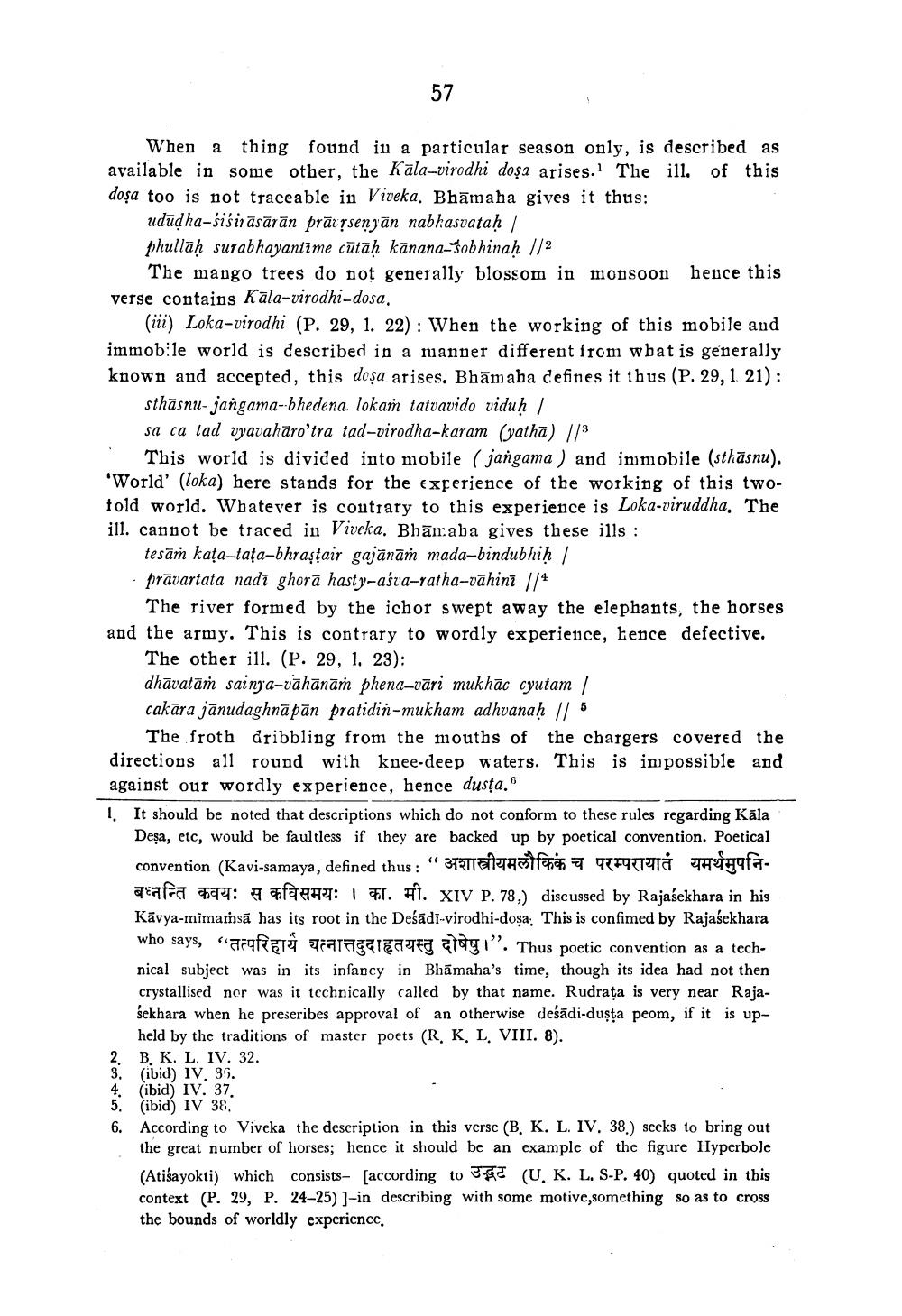________________ 20. When a thing found in a particular season only, is described as available in some other, the Kala-virodhi dosa arises. The ill, of this dosa too is not traceable in Viveka. Bhamaha gives it thus: ududha-sisirasaran prarrsenyan nabhasvatah / phullah surabhayantime cutah kanana-sobhinah 1/2 The mango trees do not generally blossom in monsoon hence this verse contains Kala-virodhi-dosa, (iii) Loka-virodhi (P. 29, 1. 22): When the working of this mobile and immobile world is described in a manner different irom wbat is generally known and accepted, this desa arises. Bhamaba defines it thus (P. 29,1 21): sthasnu- jangama-bhedena. loka tatvavido viduh / sa ca tad vyavaharo'tra tad-virodha-karam (yatha) //3 This world is divided into mobile (jangama ) and inmobile (sthasnu). 'World' (loka) here stands for the experience of the working of this twofold world. Wbatever is contrary to this experience is Loka-viruddha. The ill. cannot be traced in Viveka. Bhan.aba gives these ills : tesam kata-tata-bhrastair gajanam mada-bindubhih / * pravartata nadi ghora hasty-asva-ratha-vahini 1/4 The river formed by the ichor swept away the elephants, the horses and the army. This is contrary to wordly experience, bence defective. The other ill. (P. 29, 1, 23): dhavatam sainga-vahanam phena-vari mukhac cyutam / cakara janudaghna pan pratidin-mukham adhvanah // 5 The froth dribbling from the mouths of the chargers covered the directions all round with knee-deep waters. This is impossible and against our wordly experience, hence dusta. | It should be noted that descriptions which do not conform to these rules regarding Kala Desa, etc, would be faultless if they are backed up by poetical convention. Poetical convention (Kavi-samaya, defined thus : "32TTENTA eh 7 9779ata Helfqeaffa : aaaa: 1 . 1. XIV P. 78,) discussed by Rajasekhara in his Kavya-mimamsa has its root in the Desadi-virodhi-dosa. This is confimed by Rajasekhara who says, "actia garagizatet stagi". Thus poetic convention as a technical subject was in its infancy in Bhamaha's time, though its idea had not then crystallised nor was it technically called by that name. Rudrata is very near Rajasekhara when he preseribes approval of an otherwise desadi-dusta peom, if it is up held by the traditions of master poets (R K L VIII. 8). 2. B K. L. IV. 32. 3. (ibid) IV. 35. 4. (ibid) IV. 37. (ibid) IV 38. According to Viveka the description in this verse (B. K. L. IV. 38.) seeks to bring out the great number of horses; hence it should be an example of the figure Hyperbole (Atisayokti) which consists- [according to 35EUR (U. K. L. S-P. 40) quoted in this context (P. 29, P. 24-25) ]-in describing with some motive,something so as to cross the bounds of worldly experience.




